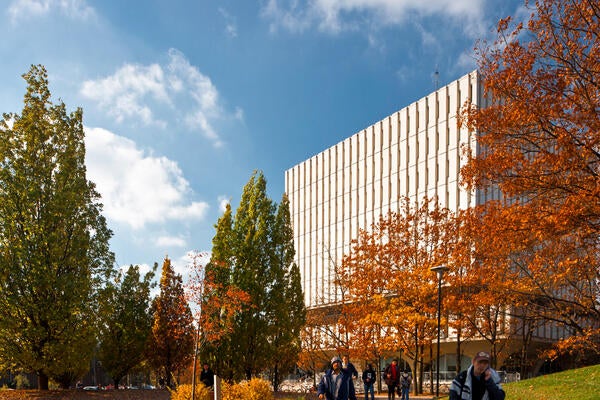
Charting a course down an unknown road
Examining history is the first step to forecasting the future when it comes to managing financial risk, says Waterloo professor.

Examining history is the first step to forecasting the future when it comes to managing financial risk, says Waterloo professor.
By By Dave Pink Communications and Public AffairsTony Wirjanto is an expert in using mathematics and statistics to model, measure and forecast financial risk. But the professor of statistics and actuarial science admits if you want to know what lies ahead for the economy - look back.
 Professor Tony Wirjanto, University of Waterloo
Professor Tony Wirjanto, University of Waterloo
“I always start with a healthy dose of history,” says Wirjanto, who also has a joint appointment with the School of Accounting and Finance.
He credits U.S. Federal Reserve chairman Ben Bernanke with saving the world from financial “depression” during the recent economic meltdown. Bernanke, Wirjanto points out, had studied the history of the Great Depression and was able to sidestep many of the mistakes made in the 1930’s.
“We’ve come up with a lot of measurements for risk, but, to this date, we don’t really know how good they are in real time. The most we can do, often, is to use the past to predict the future,” says Wirjanto.
Wirjanto has devoted his academic career to the study of volatility modeling and forecasting of financial risk . “The truth of the matter is that we still know very little about what causes systemic risk - a failure of the entire system - and how to measure this,” he concedes. “Risk is random.”
Wirjanto works with graduate students in both the Department of Statistics & Actuarial Science and the School of Accounting and Finance. He completed his undergraduate work in electrical engineering in Germany. He went on to earn a PhD in mathematics at Stanford University, and another doctorate in econometrics at Queen’s University
“The challenge to people like me is to operate in real time, but there are complications. New crises tend to take different shapes and forms, and the risk categories studied in academic world tend to show up in a rather intertwined manner in practice,” he says — as in Japan, where they were recovering from a decade of economic setbacks when the 2011 tsunami struck.
Potential financial, or, for that matter, natural, disasters simply are difficult to be factored into a “neat mathematical model” as much as we want it to be, says Wirjanto.
“We often base our forecasts of an impending crisis on a set of past tranquil market conditions. How credible can it be? A crisis, if erupted, tends to be caused by conditions we have missed in our model. I think that what we need is a little bit of a holistic or an integrated approach when it comes to modeling, measuring and forcasting financial risks in real time. That’s more easily said than done.”

Read more
Meet five exceptional Waterloo graduate students crossing the convocation stage as Class of 2025 valedictorians

Read more
Twenty-six researchers receive federal funding to drive discovery, innovation and research infrastructure development

Read more
The Royal Society of Canada welcomes five new fellows and one RSC College member from the University of Waterloo
The University of Waterloo acknowledges that much of our work takes place on the traditional territory of the Neutral, Anishinaabeg, and Haudenosaunee peoples. Our main campus is situated on the Haldimand Tract, the land granted to the Six Nations that includes six miles on each side of the Grand River. Our active work toward reconciliation takes place across our campuses through research, learning, teaching, and community building, and is co-ordinated within the Office of Indigenous Relations.